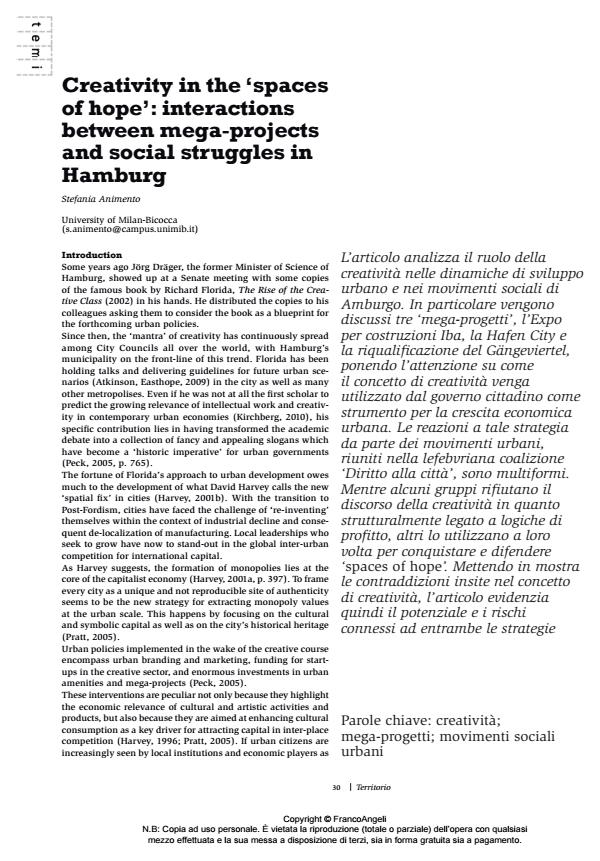Creativity in the ‘spaces of hope’: interactions between mega-projects and social struggles in Hamburg
Titolo Rivista TERRITORIO
Autori/Curatori Stefania Animento
Anno di pubblicazione 2015 Fascicolo 2015/73
Lingua Inglese Numero pagine 9 P. 30-38 Dimensione file 333 KB
DOI 10.3280/TR2015-073005
Il DOI è il codice a barre della proprietà intellettuale: per saperne di più
clicca qui
Qui sotto puoi vedere in anteprima la prima pagina di questo articolo.
Se questo articolo ti interessa, lo puoi acquistare (e scaricare in formato pdf) seguendo le facili indicazioni per acquistare il download credit. Acquista Download Credits per scaricare questo Articolo in formato PDF

FrancoAngeli è membro della Publishers International Linking Association, Inc (PILA)associazione indipendente e non profit per facilitare (attraverso i servizi tecnologici implementati da CrossRef.org) l’accesso degli studiosi ai contenuti digitali nelle pubblicazioni professionali e scientifiche
L’articolo analizza il ruolo della creatività nelle dinamiche di sviluppo urbano e nei movimenti sociali di Amburgo. In particolare vengono discussi tre ‘mega-progetti’, l’Expo per costruzioni Iba, la Hafen City e la riqualificazione del Gängeviertel, ponendo l’attenzione su come il concetto di creatività venga utilizzato dal governo cittadino come strumento per la crescita economica urbana. Le reazioni a tale strategia da parte dei movimenti urbani, riuniti nella lefebvriana coalizione ‘Diritto alla città’, sono multiformi. Mentre alcuni gruppi rifiutano il discorso della creatività in quanto strutturalmente legato a logiche di profitto, altri lo utilizzano a loro volta per conquistare e difendere ‘spaces of hope’. Mettendo in mostra le contraddizioni insite nel concetto di creatività, l’articolo evidenzia quindi il potenziale e i rischi connessi ad entrambe le strategie
Parole chiave:Creatività; mega-progetti; movimenti sociali urbani
- The Routledge Handbook of Henri Lefebvre, The City and Urban Society Gunter Heinickel, Hans-Peter Meier Dallach, pp.207 (ISBN:9781315266589)
Stefania Animento, Creativity in the ‘spaces of hope’: interactions between mega-projects and social struggles in Hamburg in "TERRITORIO" 73/2015, pp 30-38, DOI: 10.3280/TR2015-073005